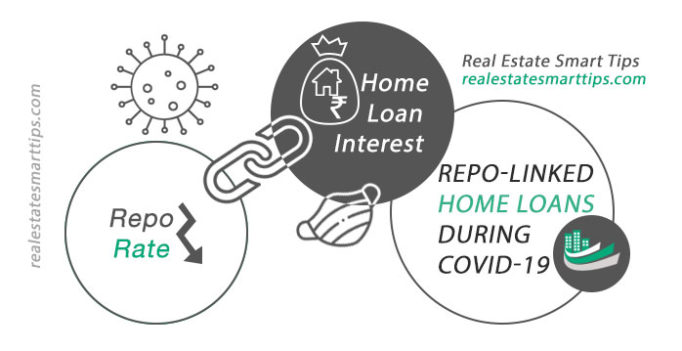The government of India declared a nationwide lockdown to get rid of Coronavirus in India. Subsequently, people would be facing money issues. Salaried employees with provisions to work from home are to some extent in a secured position. However, in the coming times, it can become a setback for them as well in case the lockdown is extended. Many small and mid-level business owners are dissolving their business. Consequently, cash flow is expected to slow down. However, the expenses are not going to slow down. You still need to pay loan EMIs and that can be a burden on some. This is where the advantage of Repo-Linked Home Loans come.
Repo-Linked Home Loans: RBI Move
The latest move by Reserve Bank of India (the central bank of India) has given a breathing space to a range of loan borrowers as a COVID-19 relief package. It has allowed the lenders to offer a moratorium on loan payments. This applies to both retail borrowers and businesses. The lending rates on home loans have come down, following the linking of lending rates to the repo rate.
If you are willing to take the benefit, it is important to understand a few things before switching to repo-linked home loans in COVID-19. Keep in mind that Repo-linked loans may not be much cheaper than MCLR-linked loans.
Switching to Repo-Linked Home Loans in COVID-19: Things To Consider
1. Not Much Cheaper than MCLR
The lending rates under the new repo-linked formation are economical than under the existing MCLR system. Nevertheless, there is a little difference between the two. For instance, home loans in the group of 30 lakh to 75 lakh, the lending rate for SBI in September under the earlier MCLR structure was 8.55 percent for salaried borrowers. This was, however, for borrowers with a good credit history and score. Now, under the new repo-linked plan, the existing lending rate stood at 8.45 percent.
2. Do Not Rush to Switch
The Reserve Bank of India has allowed present borrowers under MCLR to move to external benchmarked loans with no fee or charge. Well, if borrowing under the repo-linked arrangement is way cheaper than under MCLR, you can think about making the switch. There are, however, some essential points that you need to take into consideration before deciding the switch. Under the new repo-linked structure the Reserve Bank of India has authorizes that loans are rearranged at least once in three months. This will come to pass only if there are any modifications in the primary repo rate. Hence lending rates henceforth will fall further only if the RBI reduces repo rate further.
What is This External Benchmarking of Home Loans?
Now, the obvious question that comes in your mind is what is this external benchmarking of loans. The concept is very simple. Let’s discuss this.
When you take a loan from a bank, be it for purchasing a house, they charge the interest considering certain methodologies agreed by the Reserve Bank of India (RBI). Now, banks use the Marginal Cost-based Lending Rate (MCLR) to reach their lending rate. Earlier, it was the Benchmark Prime Lending Rate (BPLR) and the Base Rate method. These were all internal benchmarks.
Why External Benchmarking?
If you have availed a home loan between April 2016 and September 2019, it is possibly linked to the marginal cost of funds-based lending rate (MCLR) – banks’ internal benchmark. Well, if it is much before that, it is expected to be hooked to the Base Rate. This is also an internal metric to price home loans.
Wrapping up:
A comprehensive cost-benefit study is essential to decide if you should go ahead with the switch. Don’t blindly accept. Think before you make a choice.
Also view Repo Rate Cut by RBI


Be the first to comment